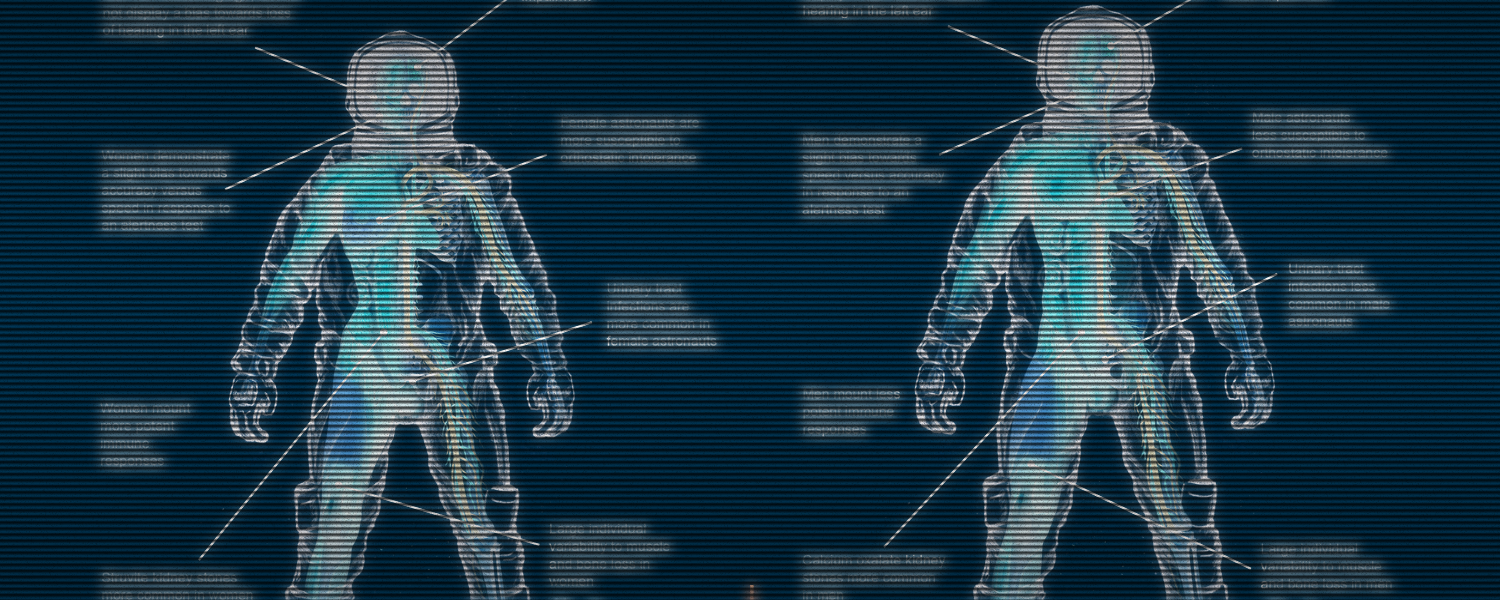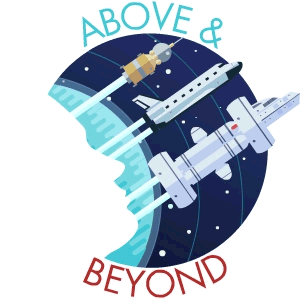

In one of my primordial childhood memories, the character Ernie from Sesame Street sings about how he’d like to visit the Moon. As he sits alone on a crescent shape, swinging his bare orange puppet feet, he realizes that while an afternoon jaunt into space would be nice, he’d “miss all the places and people I love” and would never actually want to live there.
The astronaut Buzz Aldrin, the second man on the Moon, struggled deeply with depression, alcoholism, and relationships upon his return. He did not maintain contact with Neil Armstrong or Michael Collins, his fellow Apollo 11 crew members. His mother (whose maiden name, oddly, was Moon) committed suicide just before his historic mission.
Space has always seemed to me a melancholy frontier. As a kid watching Star Trek with my father, the idea of a final frontier was not inspiring–but intimidating. The show’s fantastical depictions of human and alien lives intermingling seamlessly in the awe-inspiring void was too evidently theatrical. Sometimes the Enterprise looked as if it were made of cardboard and would crumple up.
The realities of life in space are, of course, far more challenging to the human body and mind than most TV and movies suggest. For one thing, our bodies are designed only for worlds where a falling object accelerates at about 32 feet per second [9.8 meters], and Earth is the only planet we know to have that particular gravitational configuration.
Off-world, the microgravity of space has numerous implications for human health. For starters, the body will suffer a significant increase in bone loss– older men and women tend to lose one to 1.5 percent of their bone density annually on Earth, while space travelers lose about one percent each month.
Losing calcium from the bones can overstress the kidneys, leading to kidney stones, and all muscles, including the heart, become weaker. Among the most serious effects of space on the body is intracranial pressure–blood and fluid shift upward to the head, increasing pressure in the tissues of the brain and spine. The consequences of this pressure are vast and serious, with vision degradation being the most immediate.
One hypothesis groups these blood flow-related threats to human endurance in space under a single diagnosis, Space Obstructive Syndrome. The medical synopsis doesn’t make for easy reading, whether you understand medical terminology or not. Imagine the vast, cold infinity as able to reach inside your body and slowly squeeze your jugular vein as you float weightlessly inside its void.

The fields of space medicine and space physiology exist to study and to learn ever more effective ways to correct for the health risks of long-term space exposure. Many of the physical effects of gravity are well understood, and progress has been made in combating them. Astronauts undergo constant monitoring of certain task functions, motor skills, and bodily fluid pressure both before and after they board space stations or undertake long flights.
There are supplements to halt bone loss and reduce the formation of kidney stones. Thigh compression cuffs help combat the fluid pressure, and it is possible, to some extent, for astronauts to participate in impact exercises like running, which are thought to help keep bones strong. Earlier this year during the London Marathon, British astronaut Tim Peake ran 26.2 miles while on the International Space Station–in virtual competition with athletes on Earth–wearing a physical harness to help replicate the pull of gravity on his body.
Astronauts on the International Space Station commonly spend about two hours a day doing exercises designed to maintain the bodily fitness that space steals. Resistance bands and pedal machines let bodies in space work against their own weight rather than against nonexistent gravitational fields. But while these measures can ameliorate harm to some extent–and being an astronaut already demands top-tier human fitness as a baseline–we are still impossibly far from the dream of living in space. Just six months in microgravity remains a significant health consideration.
The controversial Mars One project, which aims to establish a human settlement on the Red Planet, has scheduled its first crews to begin their journeys in 2026. A journey to Mars can take seven months or more, and that doesn’t even factor in adjustment to the environment on Mars, where gravity is 38 percent of Earth’s. Potential colonists would have to be prepared to leave Earth, endure the long space flight, and then readjust to a third gravitational environment–a challenge for which we currently have no solution. And that’s even before we consider the radiation from cosmic rays and solar events, for which no countermeasures have yet been discovered.
On the project’s advisory board is space doctor Thais Russomano, who has over 20 years experience at the junction of life sciences and space. She became an advisor out of admiration for the project’s ambition–and because she believes that only when the private sector and wealthy investors get involved in spaceflight will there be enough research, funding, and progress to begin understanding the long-term challenges better. Russomano is convinced that a new influx of travelers–who’ll still need to be quite fit by civilian standards–will exponentially increase the pace of learning and solutions development in space healthcare.

Beyond the physical, the psychological effects of space on a human being are far more challenging to understand and account for. It’s not, to put it simply, in our nature to live in space. As a young scientist, Russomano met retired cosmonaut Valeri Polyakov, who holds the current world record of 438 days spent in space. She recalls telling him how she dreamed of going one day, and how his reply would probably please Sesame Street‘s Ernie: “Young lady, if you go to space one day, go for one day, because the other 437 are so monotonous!”
Manned space flight requires a heroic ability to withstand monotony, isolation, and disorientation. Fitness for survival in enclosed, hostile environments with only a small number of others is more of a mental than a physical task, and it’s hard to train and prepare for. The crew’s accounts of deprivation and psychological stress from living on the Russian space station Mir are sobering to read.
When Russomano met Buzz Aldrin, he told her of how, as he stood on the Moon, he held his finger over the distant globe of Earth, effectively erasing it from view. Nothing in an astronaut’s training, he suggested, could possibly prepare a human being for such an immutable revelation of our own smallness, our own fragility, amid the endless universe. “This is, according to psychiatrists, something too big for a human to experience,” Russomano said. “It’s impossible to mimic it on Earth.”
While teams may practice isolated living in hostile Earth landscapes, such as the Arctic or the middle of the desert, she believes there is presently no (ethical) way to simulate and predict how someone would perform when something goes wrong and there is no way at all for them to return home. In recent years, NASA has reconsidered what it might mean for someone to have “the right stuff” for space travel–the John Glenn ideal has widened to consider a more sensitive, expressive, and collectivist sort of candidate as potentially the most stable for the long term.
The best hope humanity has of living long lives on the dreamed-of future Martian colonies is for us to adapt, said Russomano. Both science and fiction have envisioned all kinds of theoretical space habitats (the Bernal Sphere, for one) that might be able to house Earth humans in foreign environments by developing the gravitational field to which we are accustomed. But future generations born on space stations or on distant planets, should that ever actually be possible, should arguably be allowed to adapt to their new habitats, rather than to stubbornly emulate the fields of Earth in tiny pockets across far-flung constellations.
“If we go to Mars and create a civilization there, then we’d have to adapt,” Russomano explained. “If you create a society on Mars, then the kids born there should be adapted to Mars’s gravitational force, rather than trying to “‘create Earth’ there. We are a product of our planet, and if we moved to another celestial body, we would need to somehow create a being there that was adapted to the conditions of that place.”
This is, of course, an ethical minefield–human adaptations on Earth took millions of years of suffering and selection, and adaptations on Mars or the Moon would take time, too. “So we’d need to create ways to survive on Mars between now and the possibility of creating a more adapted being for this environment–more countermeasures and more ways to survive,” she said.
Importantly, reproduction in space has not been well investigated, Russomano suggested. “It will take a while, in my mind, for it to happen in a safe and ethical way. You cannot just send people to Mars, ask them to procreate, and then see what happens.”

If Star Trek‘s utopian vision, where humans peacefully travel among other species sharing the same air, the same gravity, and the same fearlessness, were to ever become possible, surely it would start here–with professionals sent into these profoundly unnatural places, hoping we can help their bodies cope.
There are no plans for the crew of Mars One’s 2026 mission to return. Maybe they’ll be sowing the seeds for future learnings on space health, or for a distant generation of Martian humans. Many people would gladly sacrifice themselves for even a chance at playing such a role in the future of our species.
But me? I just couldn’t do it–I couldn’t forget the vascular fist around my brain, the silt of calcium come loose in my blood, or the fear. The utter fragility of human life, the paralyzing knowledge of having left the one place I am made for surviving. The smallness, the madness, and the fear. It would be so final. We may be meant only to visit, not to live.


How We Get To Next was a magazine that explored the future of science, technology, and culture from 2014 to 2019. This article is part of our Above & Beyond section, which looks at our understanding of the universe beyond Earth. Click the logo to read more.
